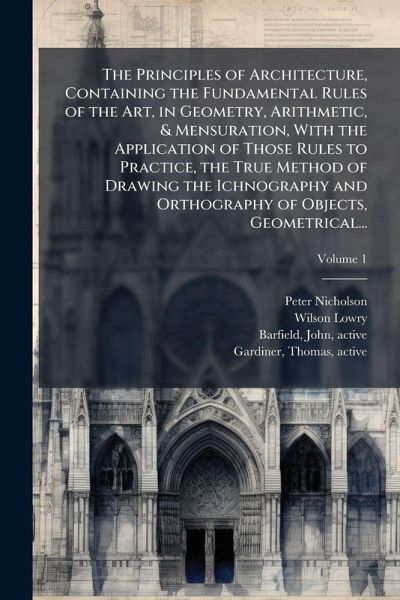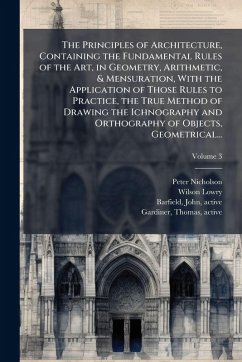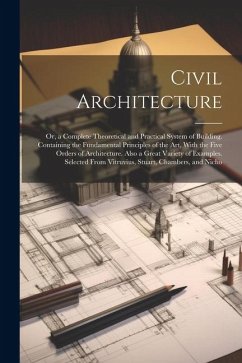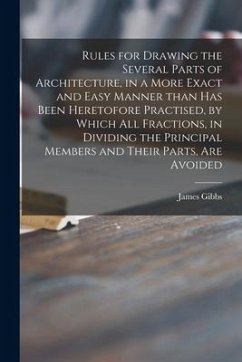
The Principles of Architecture, Containing the Fundamental Rules of the Art, in Geometry, Arithmetic, & Mensuration, With the Application of Those Rules to Practice, the True Method of Drawing the Ichnography and Orthography of Objects, Geometrical...
Versandkostenfrei!
Versandfertig in über 4 Wochen
25,99 €
inkl. MwSt.
Weitere Ausgaben:

PAYBACK Punkte
13 °P sammeln!
"The Principles of Architecture, Containing the Fundamental Rules of the Art," by Peter Nicholson, is a comprehensive treatise on the foundational elements of architectural design. Originally published in 1809, this volume delves into the geometric, arithmetic, and mensuration principles essential for architects. Nicholson meticulously details the application of these rules to practical design, offering guidance on drawing the ichnography and orthography of objects with geometrical precision. This historical text provides valuable insight into early 19th-century architectural practices and edu...
"The Principles of Architecture, Containing the Fundamental Rules of the Art," by Peter Nicholson, is a comprehensive treatise on the foundational elements of architectural design. Originally published in 1809, this volume delves into the geometric, arithmetic, and mensuration principles essential for architects. Nicholson meticulously details the application of these rules to practical design, offering guidance on drawing the ichnography and orthography of objects with geometrical precision. This historical text provides valuable insight into early 19th-century architectural practices and education. The book serves as a significant resource for understanding the classical approach to architectural design and the mathematical underpinnings of the art. It remains a valuable resource for students, historians, and practitioners interested in the evolution of architectural theory and practice. This work has been selected by scholars as being culturally important, and is part of the knowledge base of civilization as we know it. This work was reproduced from the original artifact, and remains as true to the original work as possible. Therefore, you will see the original copyright references, library stamps (as most of these works have been housed in our most important libraries around the world), and other notations in the work. This work is in the public domain in the United States of America, and possibly other nations. Within the United States, you may freely copy and distribute this work, as no entity (individual or corporate) has a copyright on the body of the work. As a reproduction of a historical artifact, this work may contain missing or blurred pages, poor pictures, errant marks, etc. Scholars believe, and we concur, that this work is important enough to be preserved, reproduced, and made generally available to the public. We appreciate your support of the preservation process, and thank you for being an important part of keeping this knowledge alive and relevant.












